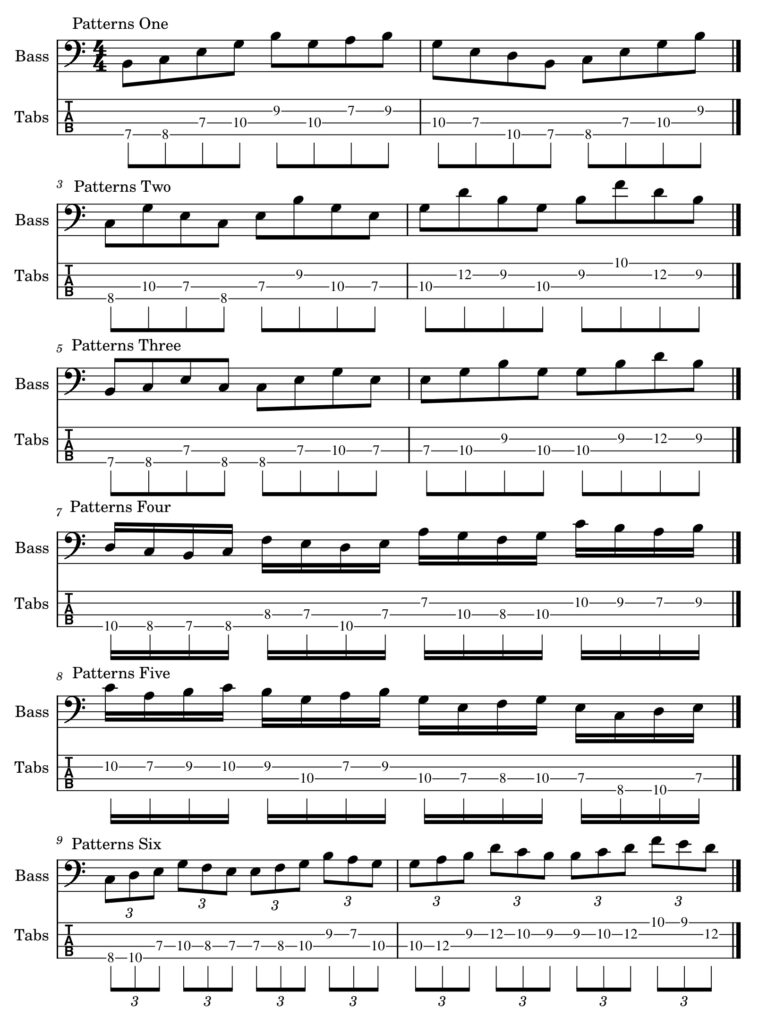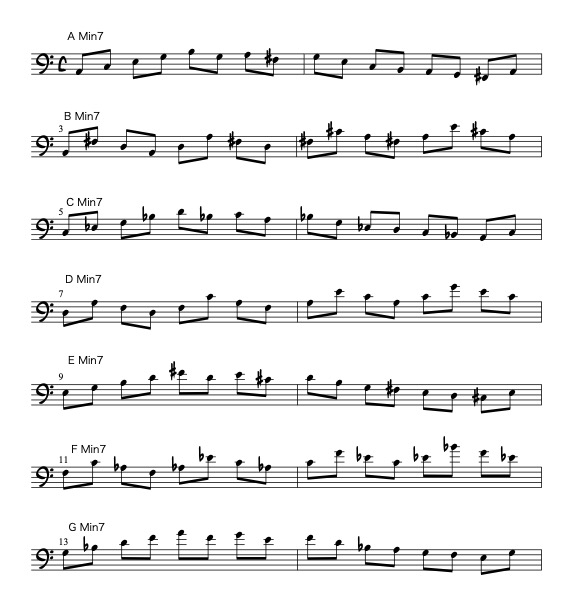A good musician is not only capable of placing the right patterns in the appropriate musical context but also possesses the skill to manipulate them, leading to the creation of new musical ideas.
The Importance of Patterns:
Versatility and Flexibility:
Developing flexibility through basic technical exercises, phrases, patterns, and licks is crucial. Exploring variations allows musicians to generate a diverse range of material for fills and phrases.
Transcribing Great Players:
Transcribing other musicians’ work is one of the most effective ways to learn phrasing, feel, and to understand how other bass players use them. It offers a well organised set of ideas for study and implementation. This process helps in gaining control over the fretboard and improves picking technique.
Personal Experience:
From the start of my bass studies, practicing patterns has been a fundamental activity. Practicing patterns has helped me with listening skills, creativity, and expression. Mastering various patterns enables me to incorporate them into grooves and fills, leading to exciting new ideas.
Practical Approach to Patterns
Incorporating Patterns in Practice:
While patterns are essential, focusing solely on them during practice sessions is impractical. Select two to four patterns in one key at a time and incorporate them into warm-up routines. This approach dedicates time to pattern practice while allowing room for other musical development areas.
Repetition and Muscle Memory:
Repetition is vital for internalizing musical patterns and concepts, making them second nature. Repeated practice solidifies muscle memory, enabling precise execution of patterns and licks. This training improves technique and dexterity, allowing fingers, hands, and the brain to respond effortlessly to musical demands.
How to Practice them
Warm Up:
Play scales up and down the fretboard, focusing on smooth transitions to develop finger independence and control. Also, ascend with one pattern and descend with another.
Basic Trill Exercise:
Choose a pattern and try to come up with a phrase or fill, and practice it like you would for the warm up stage, following a scale.
Advanced Exercise:
Integrate trills into grooves and bass lines. This will ensure effective use in real situations. Sometimes I write trills and fills that sound good by themselves but fail in a specific context.
At the end of this process, I have worked on technique and speed and I have various fills and licks that belong to me and are part of my own sound.
Understanding and practicing patterns are crucial for any serious musician. These techniques expand harmonic vocabulary, enhance overall musicality and allow for more expressive playing. By incorporating patterns into daily practice and exploring their creative potential, we can elevate bass playing skills and develop a unique musical voice.
Major Chords

Minor Chords


Dominant Chords
